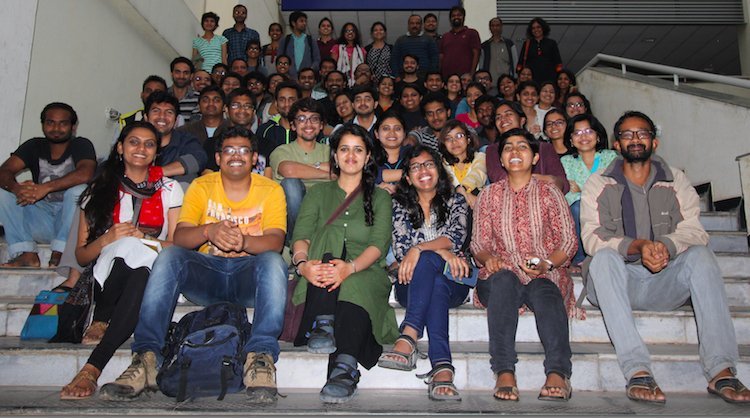
The Centre for Ecological Sciences (CES) In-House Symposium, primarily organized and run by students of the department, was held between 18 – 20 January, 2016 in the CES Department at the Indian Institute of Science (IISc). It covered 34 myriad talks by students and faculty, and 9 poster presentations over a span of three days. CES became a formal department of IISc in 1983 — students and faculty here have been working on understanding ecological processes through a combination of field, lab and theoretical research.
The annual symposium at CES is a platform for students and faculty alike to get together and exchange research ideas. The talks range from presenting of preliminary ideas and conceptual discussions, to showcasing completed research projects. Discussions are held in an informal environment to encourage interaction through easy conversation. Presenting one’s work to an audience outside of the lab helps in gaining useful perspectives from people belonging to different sub-disciplines in ecology.
This year’s event opened with Raghavendra Gagadkar’s talk on the evolution of culture. He began by outlining the importance of non-specialists reviewing a field of research to produce an unbiased overview of that discipline, and proceeded to give an example of how he, as an outsider, could summarize the major themes in the area of evolution of culture.
He was followed by Hari Sridhar, a former PhD student at CES, who talked about the life of a scientific paper. He pointed out that the current trend in publishing has many problems associated with it. The scientific process itself is misrepresented as being a linear narrative in the paper, which is often not the case. Kartik Shanker, a faculty at CES, then spoke about understanding patterns of species richness through range distributions of species. These have often been studied separately, but species richness can be thought of as an emergent pattern when multiple species distributions overlap with one another.
Apart from the very engaging oral talks scheduled in the symposium, the latter two days of the event also had students presenting their work in the poster format. The poster sessions were very interactive, where presenters had the chance to engage with fellow students and faculty more intimately. Many of the posters were visually engaging, the topics ranging from animal behaviour to vegetation patterns to biogeography, drawing in large groups of interested audience.
Among the highlights of Day 2 was a talk by Divya B, a PhD student. She spoke about testing hypotheses related to the age of forests in the Western Ghats. It is believed that the southern Western Ghats are older and more diverse, and might have acted as a refuge for several tree species in the past. To test this hypothesis, she used phylogenetic diversity, which calculates the depth of evolutionary history among lineages. Her results show that phylogenetic diversity is indeed greater in the southern Western Ghats as expected, and also in high elevation areas of the Western Ghats.
Shankar Rao, the current curator of the CES Herbarium unveiled his team’s new web portal on documenting the flora of Eastern Ghats. Rao and his team have come up with lists of tree species, their taxonomy, distribution, morphology, phenology and conservation status based on exploratory expeditions carried out so far. The website has a user-friendly interface that allows visitors to search for plants using multiple kinds of keywords.
Talks on Day 3 began with Kavita Isvaran talking about competition for mates among females in animal species. Sexual selection literature has so far focused on male-male competition, while ignoring females altogether. Later that day, Ashwini VM presented her Masters’ work describing the phylogeography of Andaman Keelbacka — a freshwater snake species endemic to the Andaman islands. She studied the population genetic structure of this species using individuals sampled from different islands. She found that individuals formed genetic clusters island-wise, and these clusters were related to one another based on the ease of movement between islands. Vishwesha Guttal gave a conceptual talk on mean, variance and correlation — statistics which are commonly used to summarize data; and showed examples of contexts in which they misbehave. The research talk that concluded the CES symposium was by Jaideep Joshi, a PhD student who presented preliminary work on the relationship between dispersal, resource exploitation and the evolution of cooperation.
The CES In-House Symposium 2016 saw a lot of interesting questions posed by an enthusiastic audience and discussion which often spilled over to tea breaks and lunch. The relaxed atmosphere was ideal for students to review their work, and gain feedback. The audience got an opportunity to experience an eclectic range of research talks, and an overview of this very vibrant department’s activities.